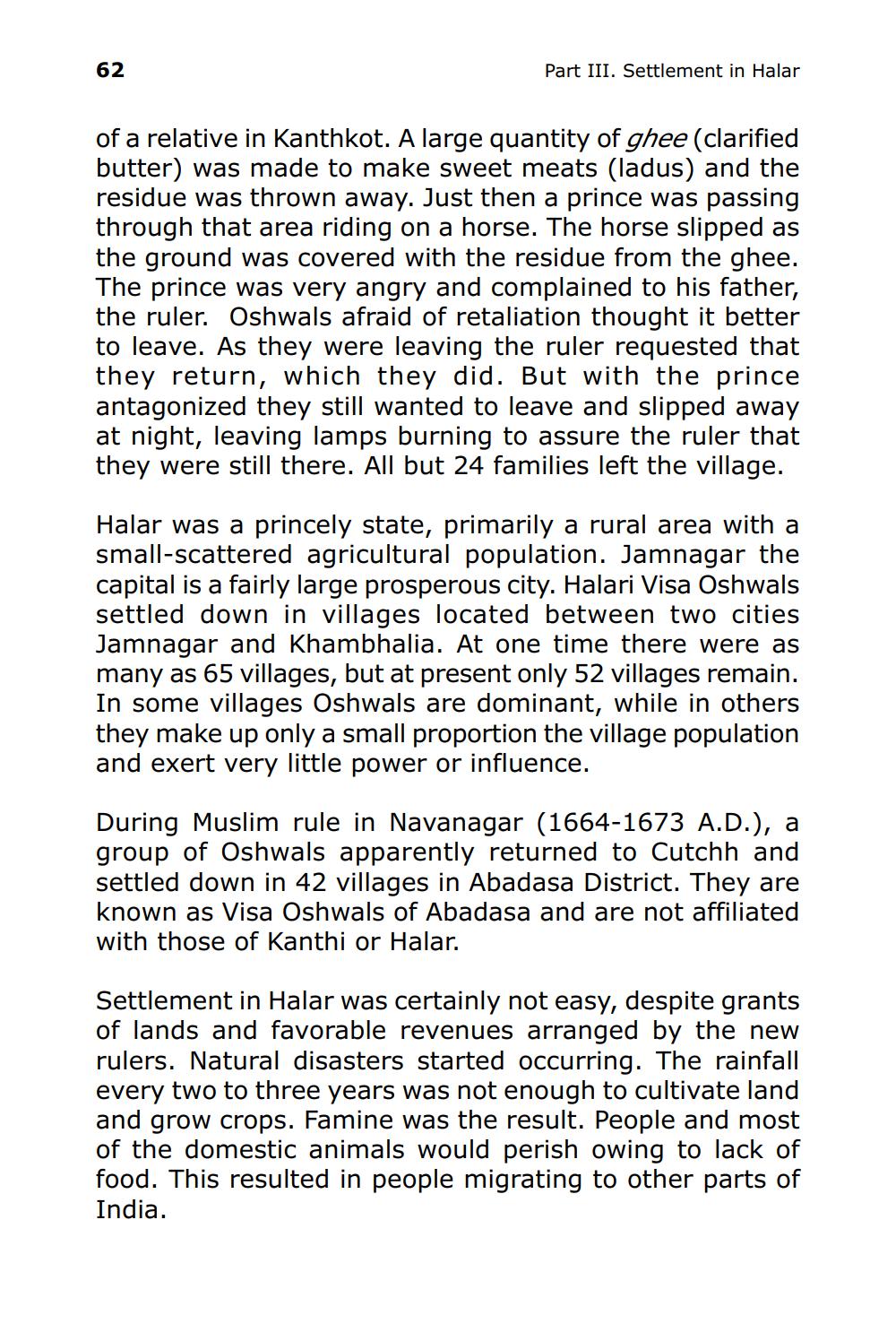________________
62
Part III. Settlement in Halar
of a relative in Kanthkot. A large quantity of ghee (clarified butter) was made to make sweet meats (ladus) and the residue was thrown away. Just then a prince was passing through that area riding on a horse. The horse slipped as the ground was covered with the residue from the ghee. The prince was very angry and complained to his father, the ruler. Oshwals afraid of retaliation thought it better to leave. As they were leaving the ruler requested that they return, which they did. But with the prince antagonized they still wanted to leave and slipped away at night, leaving lamps burning to assure the ruler that they were still there. All but 24 families left the village.
Halar was a princely state, primarily a rural area with a small-scattered agricultural population. Jamnagar the capital is a fairly large prosperous city. Halari Visa Oshwals settled down in villages located between two cities Jamnagar and Khambhalia. At one time there were as many as 65 villages, but at present only 52 villages remain. In some villages Oshwals are dominant, while in others they make up only a small proportion the village population and exert very little power or influence.
During Muslim rule in Navanagar (1664-1673 A.D.), a group of Oshwals apparently returned to Cutchh and settled down in 42 villages in Abadasa District. They are known as Visa Oshwals of Abadasa and are not affiliated with those of Kanthi or Halar.
Settlement in Halar was certainly not easy, despite grants of lands and favorable revenues arranged by the new rulers. Natural disasters started occurring. The rainfall every two to three years was not enough to cultivate land and grow crops. Famine was the result. People and most of the domestic animals would perish owing to lack of food. This resulted in people migrating to other parts of India.




